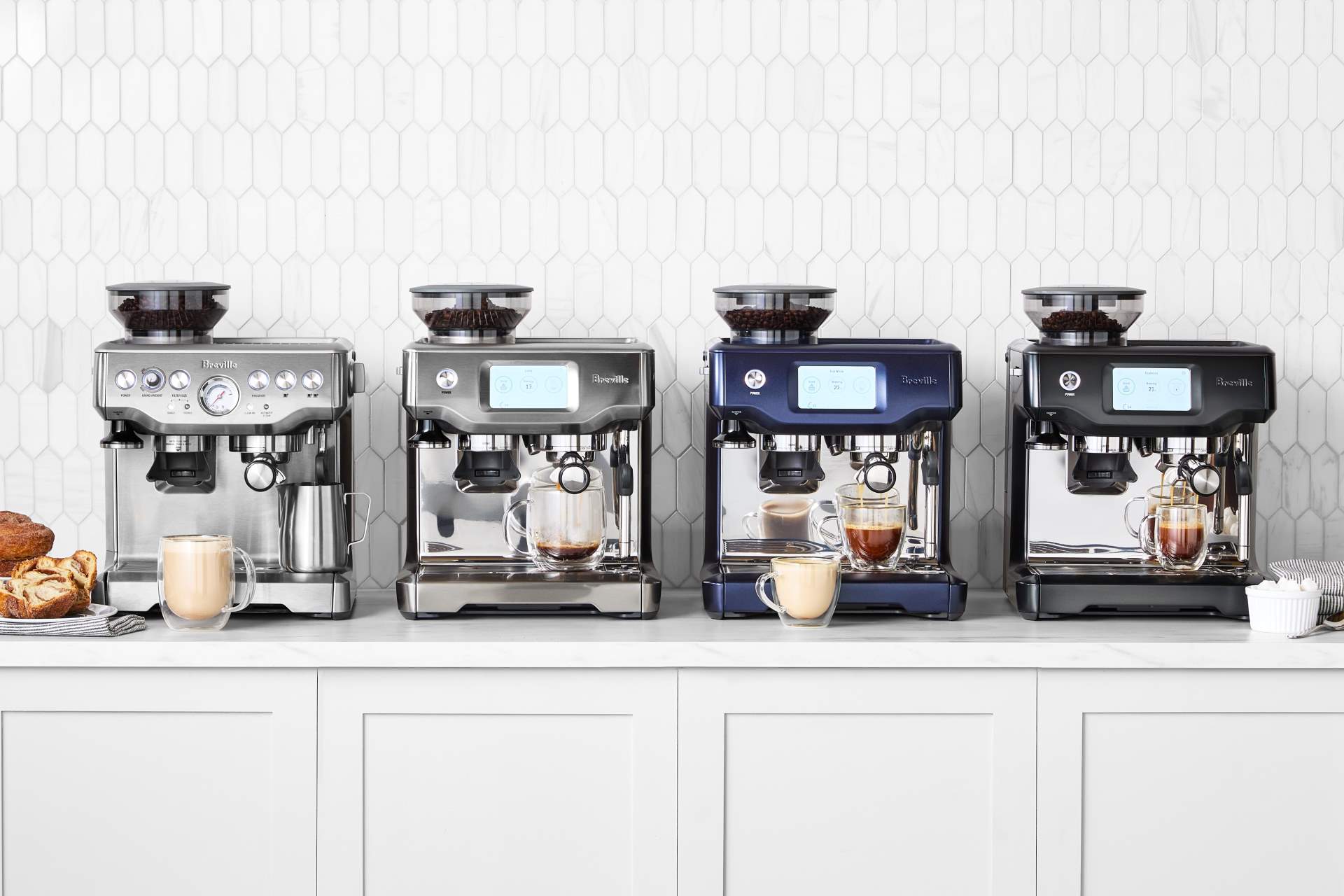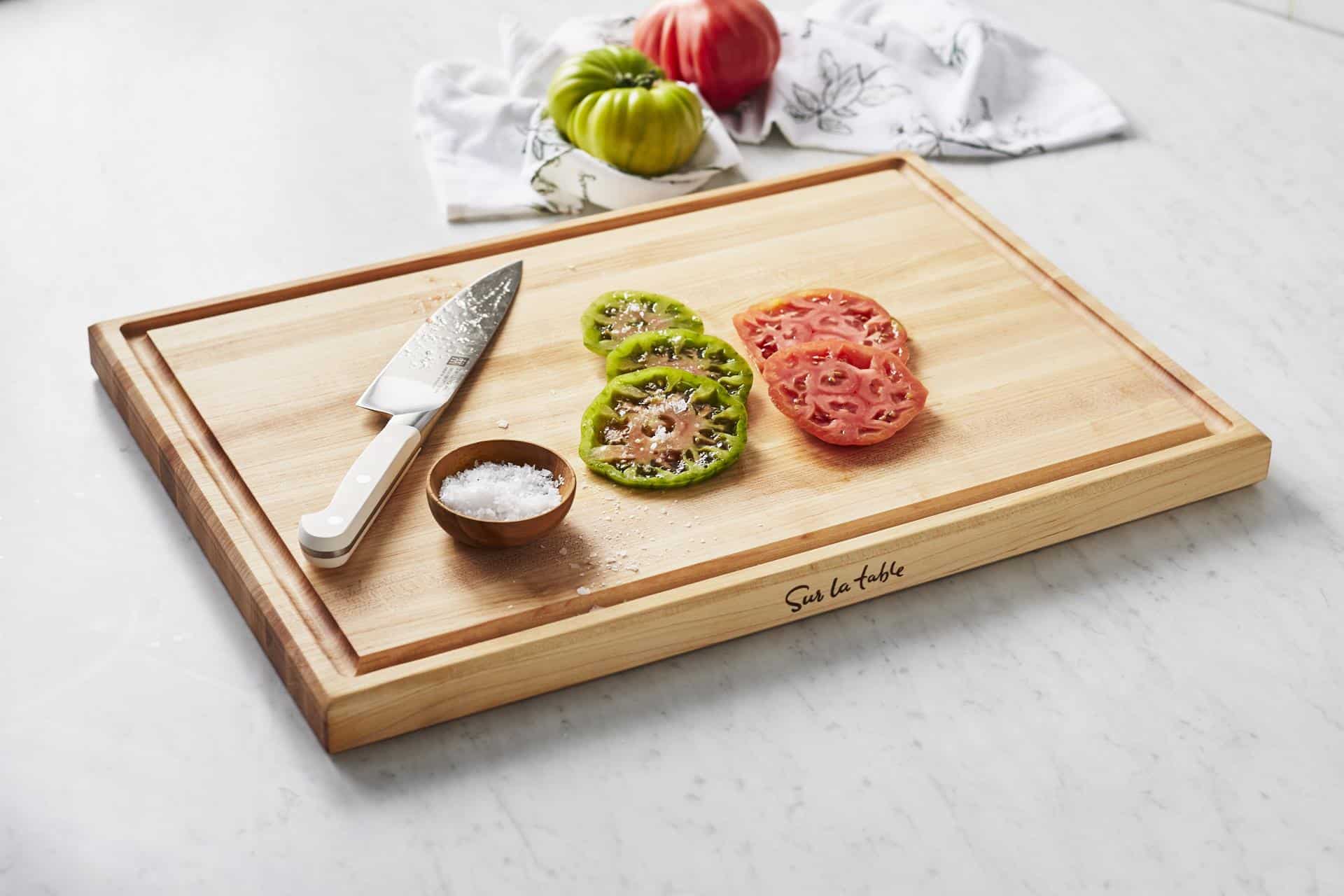Your morning brew, made by you, perfected by Breville.


Wood cutting boards are the unsung heroes of the kitchen, not only offering a durable surface for chopping and slicing, but also adding a touch of warmth and natural beauty to the heart of your home.
Beyond their aesthetic appeal, wood boards are preferred by chefs and home cooks alike for their gentle touch on knives and ability to be restored to like-new condition with proper care. However, unlike their plastic counterparts, wood boards require a bit more attention to maintain their functionality and appearance. Without regular cleaning, drying and conditioning, they can become warped, cracked or even harbor bacteria.
Whether you’re a seasoned chef or a casual cook, understanding how to care for your wood cutting board is key to preserving its quality and ensuring it remains a safe, reliable tool for all your culinary needs.
Dive in to learn the essentials of cleaning and maintaining your wood cutting boards—from daily cleaning rituals to in-depth maintenance techniques—to ensure your board remains a beautiful fixture in your kitchen for years to come.
Hungry for more? From cutting boards and knife blocks to sharpeners and storage solutions, our collection of Knife Accessories will ensure your kitchen is a cut above the rest!
Wood cutting boards are a staple in kitchens worldwide, cherished for their durability, natural aesthetics and functional benefits. Before we dive into the specifics of maintenance, it’s essential to understand the types of wood cutting boards available and their unique characteristics.
A well-maintained wood cutting board is not just about aesthetics—it’s also about food safety and extending the life of your board.
Proper cleaning can be divided into two main categories: routine cleaning, which should be done after every use, and deep cleaning, for when your board needs some extra TLC to remove tough stains or odors.
Here’s how to keep your wood cutting board in pristine condition through both methods.
After each use, your wood cutting board should be cleaned to remove food particles and bacteria, and to prevent staining. Here’s a straightforward process:
Even with regular cleaning, wood cutting boards can develop deep-set stains and odors over time. Deep cleaning methods help to restore the board’s surface without damaging the wood.
If you choose to use bleach, ensure it’s highly diluted as it can discolor and dry out your board. Mix 1 teaspoon of unscented bleach with 1 quart of water. Apply the solution sparingly to the board’s surface, let it sit for a few minutes to disinfect, then rinse the board thoroughly with water and dry it completely. It’s crucial to not overuse bleach and to ensure the board is rinsed well to prevent any bleach residue.
The regular maintenance of your wood cutting board is crucial to extend its life and maintain its beauty and functionality. Oiling and conditioning play a pivotal role in this process.
Wood is naturally porous, and without proper care, it can dry out, crack or warp.
Oiling and conditioning penetrates the wood, creating a barrier that retains moisture, enhances durability and prevents the wood from absorbing odors and stains. This not only keeps your cutting board in optimal condition, but also makes cleaning easier.
Protecting your wood cutting board from damage requires mindful practices during daily use. To ensure its longevity, it’s important to avoid prolonged exposure to moisture, which means never soaking your board in water or leaving it wet after cleaning. Moisture can penetrate the wood, leading to warping, cracking and creating an environment conducive to bacteria growth.
Similarly, extreme temperatures are detrimental to wood cutting boards. Placing hot pans directly onto the board can cause the wood to warp and split.
To maintain the highest standards of kitchen hygiene and prevent cross-contamination, it’s also advisable to use separate cutting boards for different types of food. Designate one board exclusively for raw meats, poultry and seafood, and another for fruits, vegetables and ready-to-eat items. This practice not only helps in keeping your board in good condition but also ensures a safer food preparation environment.
Even with meticulous care, wood cutting boards can encounter some common issues over time. Understanding how to address warping, cracks or lingering odors and knowing when to repair versus replace your board can help extend its lifespan and ensure its safe use.
Minor imperfections like scratches and small nicks can often be sanded down and oiled, restoring the surface to a smooth finish. Regular maintenance can prevent many issues from becoming severe.
That said, consider replacing your cutting board if it has deep, wide cracks that are difficult to clean, if warping is severe and doesn’t respond to corrective measures, or if the board shows signs of rot. Safety should be your priority; a damaged board can harbor bacteria and pose a risk to food safety.
Hungry for more? From cutting boards and knife blocks to sharpeners and storage solutions, our collection of Knife Accessories will ensure your kitchen is a cut above the rest!
Join The Conversation